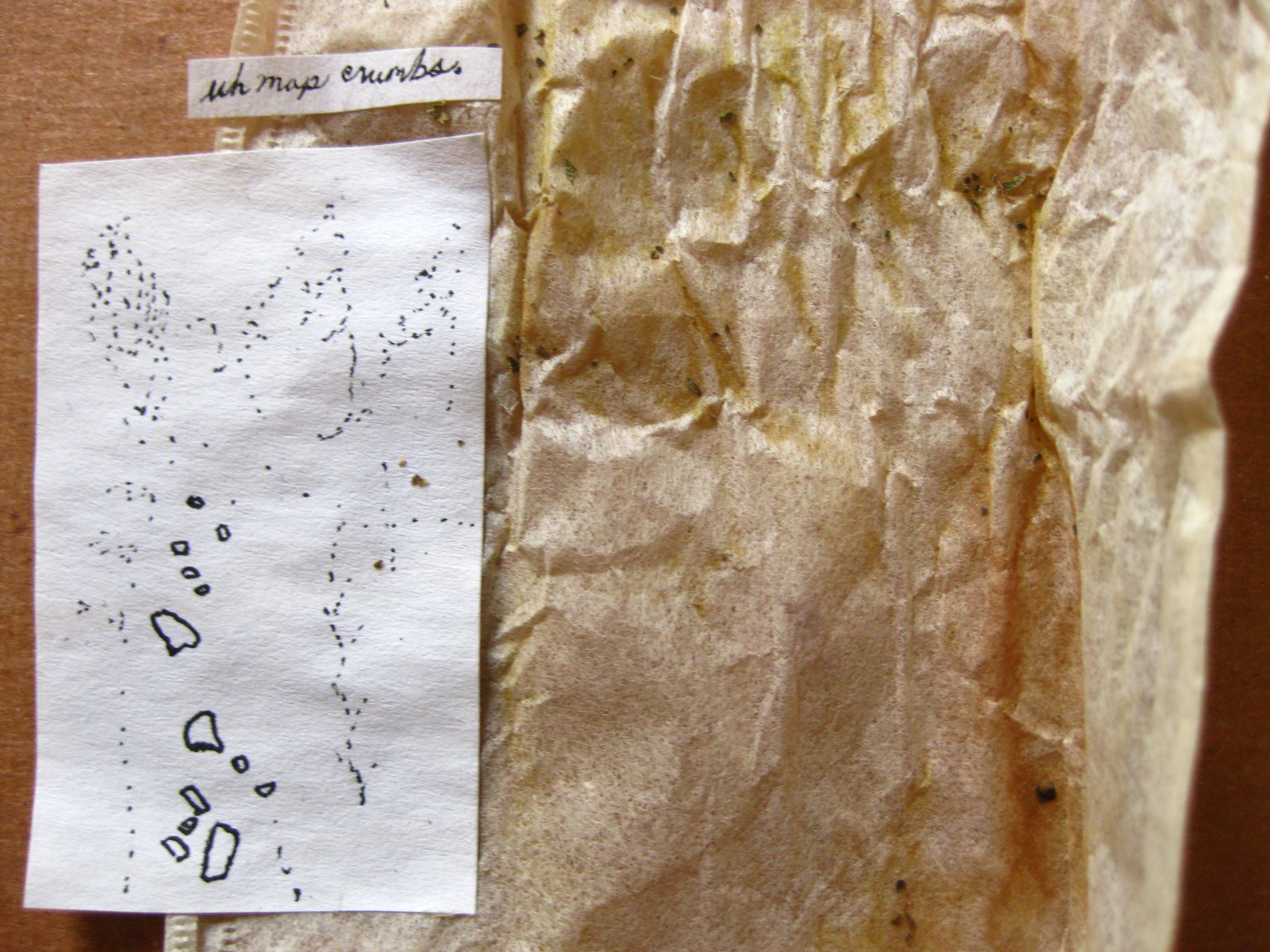Correspondence
I Put In A Call 9 162120 1 311212 is a collaborative effort at provisional modes of communication by way of correspondence, between Participant A and Participant B. This exchange was built on the condition that the work created by Participant A, consist of non-verbal tangible objects. Literally referred to as "Asks," each selection of imagery/objects functions toward satisfying basic human needs, in the absence of spoken or written language. Let the correspondence serve as a model of the channels through which signals are sent. The artworks represent information transmitted--in this case, by way of post. If this communication is received intact, it can produce an empathetic response.
The requirement of Participant B, the recipient, is to record the sound(s) of the various stages of making contact with the objects; i.e., the opening of the parcel, the opening of the container (of the objects), when provided, and the handling and rearranging of the objects. In some instances, instructions are provided as to how all the articles should be placed, so as to recreate the composition arrived at prior to being packaged and sent.
During the course of this process/exchange, each parcel can exist individually. However, the exchange, in its entirety, has the secondary function of establishing a map (of comforts) or a "blanket," which serves as a general representation of a person's character. The audio recordings serve as a corresponding map of sounds, and the interaction with the objects is indicative of the way, in which two people might relate to the one another, in this case, Participant A and Participant B. The two approaches collectively suggest that these demands have been answered, marking the conclusion of the project.













Correspondence
I Put In A Call 9 162120 1 311212 is a collaborative effort at provisional modes of communication by way of correspondence, between Participant A and Participant B. This exchange was built on the condition that the work created by Participant A, consist of non-verbal tangible objects. Literally referred to as "Asks," each selection of imagery/objects functions toward satisfying basic human needs, in the absence of spoken or written language. Let the correspondence serve as a model of the channels through which signals are sent. The artworks represent information transmitted--in this case, by way of post. If this communication is received intact, it can produce an empathetic response.
The requirement of Participant B, the recipient, is to record the sound(s) of the various stages of making contact with the objects; i.e., the opening of the parcel, the opening of the container (of the objects), when provided, and the handling and rearranging of the objects. In some instances, instructions are provided as to how all the articles should be placed, so as to recreate the composition arrived at prior to being packaged and sent.
During the course of this process/exchange, each parcel can exist individually. However, the exchange, in its entirety, has the secondary function of establishing a map (of comforts) or a "blanket," which serves as a general representation of a person's character. The audio recordings serve as a corresponding map of sounds, and the interaction with the objects is indicative of the way, in which two people might relate to the one another, in this case, Participant A and Participant B. The two approaches collectively suggest that these demands have been answered, marking the conclusion of the project.